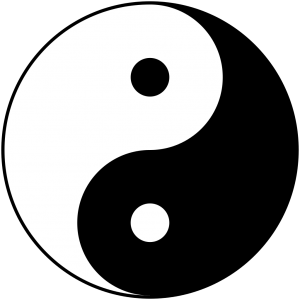This weekend I had the honor to learn from master Chungliang Al Huang, a renowned Tai ji (not Chi (: ) teacher. His powerful energy, words of wisdom and lessons resonated with me very deeply. I had practiced some Tai Ji and studies Qi Gong with a master in Chicago, but I had never been to a workshop like this one. He inspired such movement and freedom, and I had never done Tai Ji to beautiful classical music for one moment, and then the next dancing my heart out to a jazz singer. It was fabulous and unlike any other experience.
The connections he made between the eastern and western world, and his extensive knowledge of both western and chinese culture was inspiring. He described himself a bridge between the eastern and western world, and I have been seeing this idea appear more in my life. I personally have been wanting and planning to carry out this type of work for awhile, and feel that this is a major step to the unification of people, which brings peace.
One of the highlights of the workshop for me was the Tai Ji movement and meaning that goes along with the movement; embrace tiger, return to mountain. This was the finishing sequence. When embracing the tiger, we embrace our all aspects of ourselves and our life, the happiness and the hardships and take it all in. Then when we return to mountain, we return to the the point we are at presently in our lives, our current position and state of growth, and are content and understand that we can only grow from this point. He stated that when we reach for something ahead of ourselves (as he reached to the side dramatically, almost falling over), we instantly become out of balance. When we lose sight of where we are at now, we no longer have firm ground beneath us. This is very beautiful and enlightening to me, and really embraces the truth in our present moment.
The guest teacher, Lynn Sellars, was also inspirational. Some of the main points she discussed was about the five kleshas that lead to suffering, as discussed in Patanjalis Yoga Sutras. The root klesha is avidya, meaning ignorance, and that all suffering in its root is from ingorance. From their stems ego, attachment to pleasure, aversion, and fear of death. She stated that yoga is the realization of the self, and that similar to an eye that can only see itself in a reflection, that the self can only see itself in a reflection, like a mirror or in water. She used the mind as the water in which we can see ourselves in. When the mind is busy, chaotic and wavering, we get a very distorted image of ourselves, while when the mind is calm, still, and clear, we see the true reflection of ourselves. This metaphor is extremely inspirational to my practice. She went on to say that to remove these obstacles, we need to follow the moral codes of compassion, and that at the root compassion eases all suffering. She also spoke about the importance of eating sattvic foods, meaning pure foods.
This week held much learning and growth! I am very grateful to have shared time with these two wonderful teachers.
I think that the similarity between these two symbols is amazing, The basic being empty whole and the filled wholes, and the curves of nature that bind them together,

